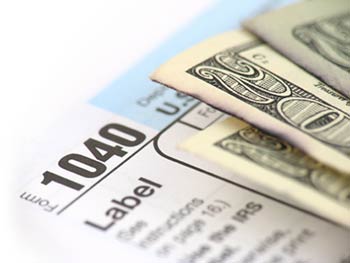
Tax refund transfers are a valuable business for tax preparation companies. Here’s what they are, how they work, and how they can benefit taxpayers.
What are refund transfers?
Also called bank products and refund settlement solutions, refund transfers are one-way taxpayers can choose to receive their tax refunds. With refund transfers, taxpayers can use these services at no upfront costs, and easily have all fees deducted from their refund.
How does the refund transfer process work?
1. Prepare return & confirm refund
After you’ve completed your tax return and determined that they should receive a refund, you can elect to use the refund transfer process with most tax preparation companies.
You should make it clear that the refund transfer process is completely optional and involves some fees. For many taxpayers, the convenience of refund transfers outweighs the additional cost.
Refund transfers and refund advances are integrated into most professional tax services, giving you several options to more quickly receiving your refund.
2. IRS distributes refund to the bank
Instead of receiving their money directly from the IRS, your clients’ refunds will first be routed through a refund settlement bank. These banks are specially authorized to deduct necessary fees from federal and state tax refunds and then distribute them to the taxpayer.
3. Bank handles relevant fees
The bank will deduct your preparation fee from the refund and distribute it to you, usually through direct deposit. Any other associated fees — such as service bureau fees, refund transfer fees, or transmitter fees — will also be deducted with no hassle for your client.
4. Clients receive their money
After the bank has received payment from the IRS and processed your tax preparation fee, they’ll distribute the refund in your client’s preferred form. Depending on the bank, your client can receive their refund in the form of a check, direct deposit, or a prepaid card.
For some taxpayers, the refund transfer process is a simple and easy way to receive their refunds and pay for their tax preparation fees.
How can refund transfers benefit your clients?
Tax preparation with no upfront cost
Refund transfers are a great option for taxpayers who can’t afford or don’t want to pay your tax preparation fee upfront. The bank will handle your fee, making the payment process as stress-free as possible for your clients.
Choice of disbursement method
Different payment options mean they can cater to clients who have a bank account as well as to clients who do not have a traditional banking relationship.
Receive money sooner
Many refund settlement banks also offer refund advances. These advances are a kind of loan that allows clients to receive their money faster than they could with a traditional refund disbursement. In this case, the bank will send payment to the client before the IRS has processed and sent their refund.
How can refund transfers benefit tax preparation businesses?
Offer more to their clients
Tax preparation is competitive, and the more options you can offer your clients, the better. Offering refund transfers and refund advances can give you an edge over other tax preparers. You can help clients get their money faster and serve clients who can’t pay upfront.
Easier payments
Refund transfers streamline the payment process and prevent you from having to chase down late payments.
In a competitive market, Refund transfers can be an asset to any tax preparation business, helping them improve their cash flow and offer more to their clients.

